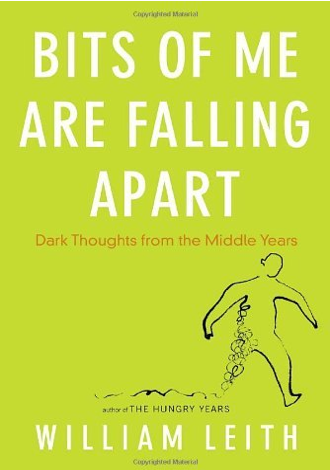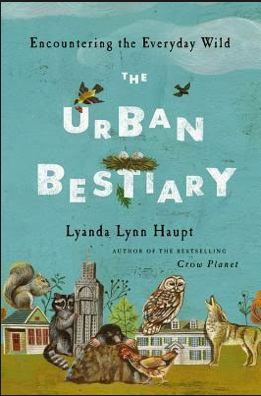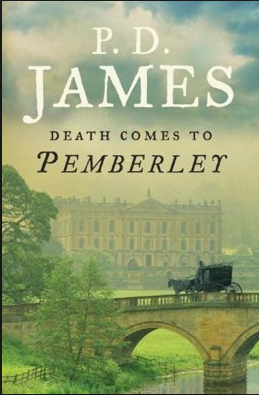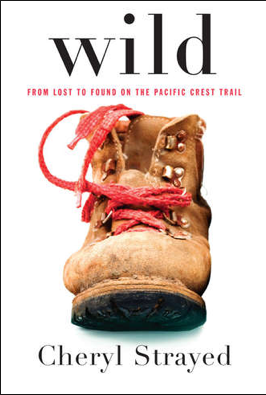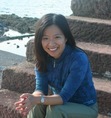Y.S. Lee's Blog, page 17
January 8, 2014
Done!
Hello, friends. Here’s what my Christmas and New Year’s looked like:
I finished the substantive revisions for Rivals in the City! It’s 70,000 words. 21 chapters. I cut one significant character. Re-introduced another. Re-worked the plot. I think I rewrote about half the book, over the past couple of months.
And now, I am very tired. I’ll catch you all next week, okay?
January 1, 2014
Sugar Plums
Hello, friends, and happy new year!
This is the sugar maple in my garden, still coated in ice from the recent ice storm. I haven’t spent much time looking ahead to the new year, just yet; instead, I find myself unwilling to let go of the extraordinary beauty that’s surrounded us for the past couple of weeks.
Here’s a picture of our local bit of waterfront path:
Another thing I’m unwilling to let go is my happiest food discovery of the holiday season: sugar plums. All I knew about sugar plums until recently was that line from Clement C. Moore’s “‘Twas the Night Before Christmas”, and the dance of the Sugar Plum Fairy. Then I got a recipe for sugar plums from my son’s former preschool teacher, Bonnie. They are absolutely lovely (Bonnie is, too). Sugar plums are also absurdly quick to make (no baking) and inherently dairy- and gluten-free, if that’s important to you.
So on the first day of 2014, let’s think about sugar plums, shall we? I hope your year ahead is as rich, flavourful, and surprising as these sugar plums.
Sugar Plums
2 cups whole almonds, toasted
1⁄4 cup honey
2 tsp. grated orange zest
1 1⁄2 tsp. ground cinnamon
1⁄2 tsp. ground allspice
1⁄2 tsp. freshly grated nutmeg
1 cup finely chopped dried apricots
1 cup finely chopped pitted dates
1 cup confectioners’ sugar or shredded coconut
Finely chop the almonds. Combine honey, orange zest, cinnamon, allspice, and nutmeg in a medium mixing bowl. Add almonds, apricots, and dates and mix well. (I did this all in the food processor. Also, I used hazelnuts because I had some lying around and hazelnuts seem deeply festive, to me.)
Pinch off rounded teaspoon-size pieces of the mixture and roll into balls. Roll balls in sugar, then refrigerate in single layers between sheets of waxed paper in airtight containers for up to 1 month. Their flavor improves after ripening for several days. (I skipped the coating because I dislike the taste of icing sugar and didn’t have superfine coconut. They were definitely sweet enough on their own.)
December 25, 2013
After the Ice Storm
Hello, friends. We made it! The Ice Storm of 2013 is over and it wasn’t nearly as severe or debilitating as some of us expected. In my neighbourhood, we lost power four times over three days, but never for more than a few hours. Really, it was just enough to give us a taste of pre-electric life before we had to do anything hardcore like melt snow for bath water.
A few observations:
- I am so very grateful to live in a place with strong infrastructure. An ice-laden branch from a neighbour’s tree fell on a power line at 3am, and there was a team out there with a bucket truck just five hours later, fixing everything. On a Sunday morning. The next time I see some Utilities Kingston workers in a coffee shop, I’m going to buy them all drinks.
- I am also deeply grateful for excellent neighbours. An hour after the power went out, we had a call from a neighbour offering us shelter, food, and company. Later that evening, a pair of friends went door-to-door in our area, checking to make sure that everyone was okay and asking if there were any frail or elderly people who needed special help.
- Doing without electricity for a couple of hours at a time was an adventure! There were some logistical considerations (“Let’s try to cook tomorrow’s food before we lose power again.” and “Let’s bathe the children now, so if the power goes out we have enough daylight to finish the job.”) and creeping around with flashlights. I had a shower by candlelight!
- You can’t bend a beam of light. After my delightful shower, I was walking down the hall holding my candles, feeling very adequately lit, when I tripped on a fallen sweater. What I learned: when you hold candles above waist height, anything below knee level is lost in utter darkness. (My friend Violette Malan experienced the first ice storm, in 1997, and she learned this same lesson in the kitchen: on that first evening without power, she had a pile of candles and felt ready to make dinner, but she couldn’t see anything in the kitchen drawers. This, she says, is why old kitchens had open presses (shelves) for utensil storage.)
- Candlelight favours small rooms with low, white ceilings. I now understand why rooms in old houses are so often small: unless people were extravagantly wealthy, they could never have lit them adequately.
- Similarly, reading after dark was an activity for the affluent. Wax candles and books were both very expensive, and you need several candles to read comfortably.
- Much as I love (and am obsessed with) the Victorian era, I am firmly a creature of the present. I love hot water on demand, bright lights, and refrigerators. However, this tiny sample of pre-electric life has made me curious. At some point, I’d like to try an extended unplugged experience. Have any of you tried this?
- Finally, is there anything more beautiful than a world enveloped in a thick layer of ice? Here are some shots from our walk this morning.

Dead flowers on a bush in our garden.

Storm clouds over Lake Ontario, and some very cold-looking pigeons on the beach!

Our local waterfront path
How was your week? Did you get hit with heavy weather? Do tell me! And finally, if you’re celebrating it, Merry Christmas! I hope it’s warm and peaceful, wherever you are.
December 18, 2013
Rivals in the City!
Hello, friends! My wish came true: this week, just in time for the holidays, I got permission to share with you the UK/World cover for Rivals in the City. The artwork is by David McDougall at Walker Books and I love it, I love it, I love it. I hope you do, too!
And here’s the back-cover description:
Convicted fraudster Henry Thorold is dying in prison, and the Agency asks Mary to take on one last case: to watch for the return of his estranged wife. Mrs Thorold is an accomplished criminal and will surely want to settle scores with Mary’s fiancé, James. With the additional complications of family and conflicting loyalties, the stakes for all involved are higher than ever.
This is the British edition and it’s scheduled to be published in June 2014. I am tremendously excited about this, and will update about the US/Canadian cover and pub date as soon as I can.
Happy December holidays, everyone! I hope you have splendid celebrations.
December 11, 2013
Self-imposed exile
Hello, friends. I’m deep into the editorial revisions (my editors’ comments on and suggested changes to the manuscript) for Rivals in the City, and I thought I’d show you my most recent work space. As some of you know, I tend to work in various spots around the house (following the sunshine from room to room), or else at a local coffee shop. Since the first of the month, however, I’ve had a new lair:
It’s a long story but basically, the children have now pushed me right out of the house into what we call the shed. (It’s not a shed, really. We have a normal shed that contains a lawnmower and too many bikes.) Still, perversely, we call this bigger one “the shed”.
A couple of years ago, it was a damp, decaying, mouse-and-squirrel-infested site of horror – a nightmare shed. Then we had it rebuilt, insulated, properly wired, and equipped with a little electric heater. Now, it’s less a shed and more of a quiet, cozy extra room in the garden. And it’s at this table that I’ve been working on my revisions.
It’s strange publishing a photo of a space that you know extremely well. The photograph makes me see the place anew, and I’m startled by how much stuff there is: I knew about Nick’s road bike and the stroller, of course, but now I’m suddenly self-conscious about the dusty mason jars, my dad’s old amplifier, the unused laundry drying rack, the bags of wood pellets, &etc. But here it is, my small island of calm in a noisy, hectic, blustering month. And I love it.
How about you? Where do you write, revise, edit, dream?
December 4, 2013
Thank you, Calgary!
Hello, friends. I arrived back in Kingston late on Friday night, simultaneously exhausted, thrilled be home, and full of euphoria. Carrie Kitchen, the Youth Services Librarian at the Calgary Public Library, did an absolutely splendid job organizing my visit, and it was a genuine pleasure to spend time with her and her very welcoming colleagues, especially Courtney Novotny and Anne Hill. Thank you, librarians!
I feel privileged to have met so many bright-eyed readers. We had some really lively conversations about books, and they asked absolutely terrific questions. I’ve always enjoyed book festivals and talking to fans, but I had a bit of a revelation this trip about how much I truly love talking about books with young people. It’s the best.
The technological highlight of my trip was definitely this Automated Materials Handling System that I saw in action at the Crowfoot Branch.

Newly returned books enter through that small hatch at the left of the picture and glide along the green conveyor belt. The machine then sorts each book by genre and branch, pushing it off the conveyor belt at just the right moment so it falls into the correct bin! I could have watched this machine for hours, I really could.
As for my travel reading, I ended up bringing this at the last moment: William Leith’s Bits of Me Are Falling Apart.
I first started it a few years ago, but gave it up after a couple of chapters. I loved Leith’s first book, The Hungry Years, but for some reason I found this one diffuse, self-indulgent, and (completely) paranoid. And then I guess I aged into it because this time around, I really, really liked it. As in, I woke up in the middle of the night with jet lag and read it for two hours. It’s funny and prickly and random and pessimistic and then, suddenly, intensely focused. Everything comes together. And while it’s mostly a tragi-comedy (it’s about reaching middle age, after all, and the end of one’s biological destiny), Leith manages to make that okay, too.
That was my week. How was yours?
November 27, 2013
Calgary!
Hello, friends. Tomorrow is Thursday, November 29 and I will be in Calgary, Alberta! Specifically, I will be doing two readings at different branches of the Calgary Public Library.
Reading 1:
Crowfoot Library
8665 Nose Hill Drive
11-12:30 p.m.
Reading 2:
Village Square Library
2623 56 St NE
2 – 3 p.m.
Both readings are open to the public so if you’re in the area, I’d love to meet you. I’ll also be signing after each reading.
I am really looking forward to visiting Calgary for the first time, but for the past few days I’ve also been consumed by an extremely worthy question: what will I read on the way? I have a roughly 12-hour journey each way, if you factor in transit time. It won’t be my favourite part of this week, that’s certain, but it’s also a terrific chance to immerse myself in a few books. So far, I’m thinking of these.
I’ve read bits and pieces of The Urban Bestiary, and it’s absolutely delightful. I can’t wait to learn to see all these common (and frequently pesky) urban animals through Haupt’s affectionate, knowledgeable eyes.
I’m really quite excited about Death Comes to Pemberly. I’m just a little nervous that my hopes might be too high.
My friend Jill recommended this one, with the strict warning that I might find myself bawling in public. I am okay with that.
Any other suggestions, readers? For me, a travel book needs to be extremely compelling, so that I can read through discomfort and frustration. I need to feel as though I’m spending time with someone smart and interesting. And apart from that, I’m wide open. Suggestions?
November 20, 2013
What is a novel?
Hello, friends. I recently had a long and utterly engaging conversation with three fellow writers: two of them critically acclaimed poets, all of us writers of novels. We were talking about the act of writing. One of us, who is working on her first novel, said that for her, writing it was like posing the question, “What is a novel?” That is, what are the novelistic conventions I value? Is it true that a novel must feature x? Or that it must not do y? For this friend, the novel she writes will be the answer – or perhaps one set of answers – to that question.
I was completely taken with this philosophical approach to writing because I have gone about things so very differently (thus far). When I sat down to write my first novel, the one thing of which I was certain was how very little I knew about writing a novel. I thought that I wanted a Victorian setting, and that I wanted to write about an outsider: a girl who, in strictly realist terms, would have led a life that was “solitary, poor, nasty, brutish, and short”.* I had my two starting points, and then I panicked. I had no idea how to structure a novel. Fortunately, I am a lifelong devotee of mystery novels, so it felt right to use the genre as a kind of coat-hanger, to give the book a conventional and useful shape. I knew what was expected, and I could tinker with the genre in small but meaningful ways.
That first book became A Spy in the House and its siblings: The Body at the Tower, The Traitor in the Tunnel, and Rivals in the City (which I’m revising right now!). And then, a couple of months ago (before the editorial revisions for Rivals boomeranged back to me), I sat down to write something completely different. Once again I leaned back and craned my neck, trying to picture the shape of this new book. Over the course of four novels I had learned a bit about plot and structure, but little that I found immediately useful.
What I did, instead, was start playing with voice. I was inspired by two things: a person I know fairly well, and a photograph from a book. And quite soon, the voice became two voices, and I began thinking of the new book as a point of departure. I was trying to provoke. I was refuting some of my previous experience of storytelling. Essentially, I was trying to write against.
With these as my two existing models of writing a novel (writing for; writing against), it’s no wonder that I was struck by my friend’s quiet, personal, solitary question: What is a novel? It’s a brave question, and a difficult one. It’s one that doesn’t allow you to lean on tradition for comfort, and which reminds you to stop being such a reactive brat. It’s one that draws your focus, again and again, into the work itself. What is a novel? I won’t know until I’ve written the next book. And I hope I’ll be able to answer that question in very different forms, over the course of my career. What do you think? What is a novel, to you?
To answer the question in a different form: a reader from Toronto, Shann, recently sent me a link to Litograph, which offers a playfully literal definition of a novel: posters, t-shirts, and tote bags printed with the entire text of a classic book. The best ones, in my opinion, aren’t necessarily of my personal favourite books; instead, they’re titles for which the artist really captured the spirit of the book: Anne of Green Gables, The Adventures of Tom Sawyer, Persuasion, Gulliver’s Travels. Thank you, Shann, for making my holiday shopping that much easier!
*Aside: I read a novel this past summer that offers a fiery but ultimately realist history for a girl like Mary Quinn: Slammerkin, by Emma Donoghue. It’s terrific and vivid and utterly oppressive because you know from the first page that its protagonist, Mary Saunders, cannot possibly have a happy ending.
November 13, 2013
Humility
Hello, friends. This past weekend, a Kingston-based group of children’s authors got together to sign books at our local Chapters. We were five: Leanne Lieberman, Jill Bryant, Mary Alice Downie, Ann-Maureen Owens, and me. Fellow author Christine Fader very generously took photos, rallied troops, handed out bookmarks, and was her ebullient self. Here’s one of Christine’s photos of us getting set up and waiting for our public. (I used that phrase entirely facetiously. If I ever refer to “my public” in earnest, please do something drastic to get my attention.) Isn’t the store lovely? It was a great antidote to a windy, rainy afternoon.
 Here are Jill, Mary Alice, and Ann-Maureen with some of their books.
Here are Jill, Mary Alice, and Ann-Maureen with some of their books.
 Leanne and I, with our YA novels. We had terrific support from store staff, who ordered books in advance, created signs, made announcements, and generally welcomed us with real warmth. Thank you!
Leanne and I, with our YA novels. We had terrific support from store staff, who ordered books in advance, created signs, made announcements, and generally welcomed us with real warmth. Thank you!
 This was the first time I’d done a signing without a reading, and I wasn’t sure what to expect. What I didn’t count on was a woman who approached us, looking both eager and hesitant. She paused, shyly, and I said hello. “Oh!” She rushed the table. “I’ve been looking for you. Are these the Chicken Soup books?”
This was the first time I’d done a signing without a reading, and I wasn’t sure what to expect. What I didn’t count on was a woman who approached us, looking both eager and hesitant. She paused, shyly, and I said hello. “Oh!” She rushed the table. “I’ve been looking for you. Are these the Chicken Soup books?”
I tried not to laugh. I helped her to find the Chicken Soup books. And I realized that I’ve finally had my classic author moment of being mistaken for somebody much, much, much more widely read. It was genuinely funny to me, and it felt like a rite of passage. I maintain, however, that I do not resemble Jack Canfield in the slightest.
It was a good afternoon, hanging out fellow writers. And I did, in fact, sign a book or two of my own.
I now have another appearance to announce: the Calgary Public Library has invited me to give a pair of readings on November 28, 2013.
Reading 1:
Crowfoot Library
8665 Nose Hill Drive
11-12:30 p.m.
Reading 2:
Village Square Library
2623 56 St NE
2 – 3 p.m.
I’m so excited to go to Calgary for the very first time. I hope you’ll spread the word, and to see some of you there!
November 6, 2013
Kingston Penitentiary, Part 2
Hello again, friends. Two weeks ago, I wrote about my recent tour of the now-closed Kingston Penitentiary. It was an intense and memorable experience, and today I’d like to round it out with a few more photos and explanations. In my earlier post, I walked you through the main prison building and mentioned the native ceremonial grounds. Just past these grounds there is a second major building that was in daily use: the prison “shops”. This is the building in which inmates could work and learn.
There was a wood shop, a metal shop, and a furniture-maker – the clearest indication of the prison’s rehabilitative function. (It may seem hard to believe, but when Kingston Penitentiary was first built in the 1835, it was considered an enlightened and modern place.) Here, in the shops, inmates could learn skills that might change their futures.
Inmates who held jobs earned a small amount of money – according to our tour guide, David Stewart (pictured), the inmate wage topped out at $6 per day and was reduced in recent years, due to budget cuts. Inmates could spend their earnings at the canteen (which sold snacks and cigarettes). Prisoners who applied for extended visits with their families were also permitted to buy and cook their own food in the family units, using money earned in the shops.
Here’s an image of the metal shop, with its beautiful Victorian brick-arched ceilings.
It’s an interesting level of trust, to have a sole teacher working with a group of inmates using heavy machinery. According to someone who worked as a prison teacher, the consensus was that it was fairly safe: the teacher was seen as an ally, or at least a bystander. If any violence occurred, it was much more likely to be between inmates.
Up on the second floor, there was also a school. You can see the small sign below. Some of the inmates would have been working towards their high school diplomas or possibly university degrees, but many lacked even elementary reading and math skills.

After the cool gloom of “the shops”, Dave led us back outside. The prison grounds house a hospital with a permanent psychiatric ward, and there is also a gym. We didn’t see either of these but we got a strangely beautiful sight of the outdoor exercise area.
It’s hard for me to judge how large this space is – maybe three football fields put together? Dave said that in the 1970s and 1980s, it was quite common to have three hundred inmates in the yard, and two unarmed guards locked inside with them. There would also have been guards with rifles posted at two or three lookout points over the yard, but even so, it’s a daunting thought.
This next image is a closer shot of the guard tower. The entrance you can see is the old one; it was filled in some time ago and you now access the guard tower from outside the prison walls. If you’re a Kingstonian, these guard towers are iconic. Along with the front door, they are the only parts of the prison you can see from the outside.
 As our tour neared its conclusion, we walked along the west wall towards the entrance. Again, I was struggling to capture the scale of the place but I remembered that there have been escapes from this penitentiary in which inmates have managed to climb the walls. Here’s what the climb would have looked like, over the west wall.
As our tour neared its conclusion, we walked along the west wall towards the entrance. Again, I was struggling to capture the scale of the place but I remembered that there have been escapes from this penitentiary in which inmates have managed to climb the walls. Here’s what the climb would have looked like, over the west wall.
 The final brief sight on our tour was of this neatly landscaped limestone building. It now houses the prison’s administration. Can you guess its previous function?
The final brief sight on our tour was of this neatly landscaped limestone building. It now houses the prison’s administration. Can you guess its previous function?
 This was the Female Department: Canada’s first prison for women. I’m not sure exactly when it was built, but I believe that originally, female inmates were housed in a separate wing of the men’s prison. They were allowed to bring their children with them. The Female Department was used to hold prisoners until 1934, when the Prison for Women was built nearby.
This was the Female Department: Canada’s first prison for women. I’m not sure exactly when it was built, but I believe that originally, female inmates were housed in a separate wing of the men’s prison. They were allowed to bring their children with them. The Female Department was used to hold prisoners until 1934, when the Prison for Women was built nearby.
At this point in the tour, we asked Dave how he’d managed to work in Corrections for thirty-two years. His answer was both encouraging and admirable: he said that the most important thing was to remember that each inmate was a person, and wanted to be treated as such. He emphasized the importance of always being watchful, because prisons are always potentially dangerous. He also said he’d been lucky because he had missed the 1971 riot at the Pen, when prisoners seized control of the building for four days, killed two inmates, and took a number of guards hostage. However, Dave finally said that he tried always to speak to inmates with respect, and to do what he said he would do, and he felt a similar respect from them in turn. I really admired his approach.
I know this is a lot of material to contemplate. But before I go, I want to leave you with a link to this CBC documentary about Kingston Pen, Tales from KP. It’s quite melodramatic but it offers a number of interesting insights into the prison. And it mentions that Charles Dickens toured the Pen in 1842! Dickens called it “an admirable gaol… well and wisely governed, and excellently regulated in every respect.” Despite the suffering and injustices that must have taken place within the walls of Kingston Penitentiary, it is good to know that it was born of generous and progressive intentions.







